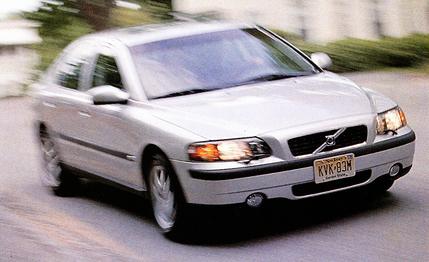
 First Drive Review
First Drive Review


Volvo says the S60 is its first sports sedan, but it may also be the last Volvo conceived in Sweden. Ford bought Volvo's car business in 1999 for $6.45 billion—not a bad deal considering Ford has spent nearly half that on the Firestone tire recall—and is moving the Swedish automaker's headquarters to Irvine, California, where it will become a part of Ford's Premier Automotive Group.
Does this mean Volvo will lose its stoic Swedish soul? Is this the end of Volvos as we know them—cars as square, solid, and austere as those big stone Lutheran churches one finds in every Swedish village? Sure it does. But don't blame it on Ford. Volvo has been trying for a decade to shed some of the weight of its past and broaden its appeal beyond the Earth First crowd.
To that end, the S60—which Volvo introduced for 2001—breaks with the company's styling conventions. But for its trademark diagonal grille bar, it could be, well, anything. It's not unattractive, with the slope-nose, short-deck, tail-up look that defines the European sports sedan, but neither is it memorable. The taillights are its only adventurous styling departure, and they're more eccentric than characteristically Volvo.
The S60's underlying architecture is the same stiff platform that forms the basis for the S80 sedan and V70 wagon. This is probably the last all-Swedish Volvo car platform; future Volvos will no doubt be sharing parts and pieces with Jaguars, Lincolns, and whatnot from Ford. This platform was designed to challenge the BMW 3-series, the Audi A4, and the Mercedes-Benz C-class. But, although it's within inches and pounds of the Germans' size and heft, it falls short in the drive department.
With front-wheel drive, the S60 can't really run in the same pack as its continental competition. Even though Volvo offers the S60 with a choice of engines—a 168-hp, 2.4-liter in-line five, a turbo version of the 2.4-liter making 197 hp, and a 2.3-liter high-pressure turbo making a prodigious 247 hp—that should give it performance parity, they're not enough. With front-wheel drive and its attendant nose heaviness, the Volvo will be quickly reeled in and eaten up once the road changes from straight to twisty.